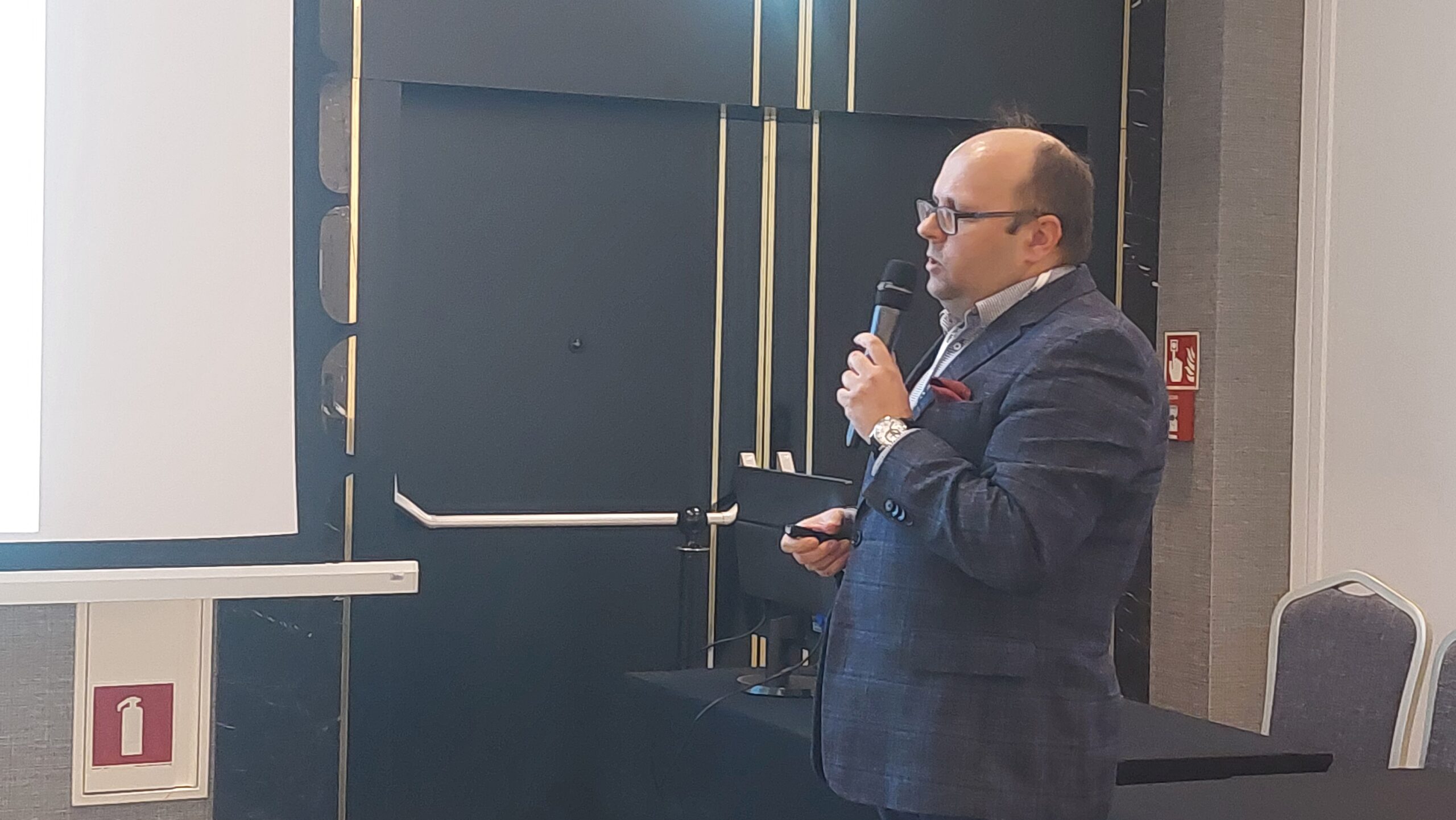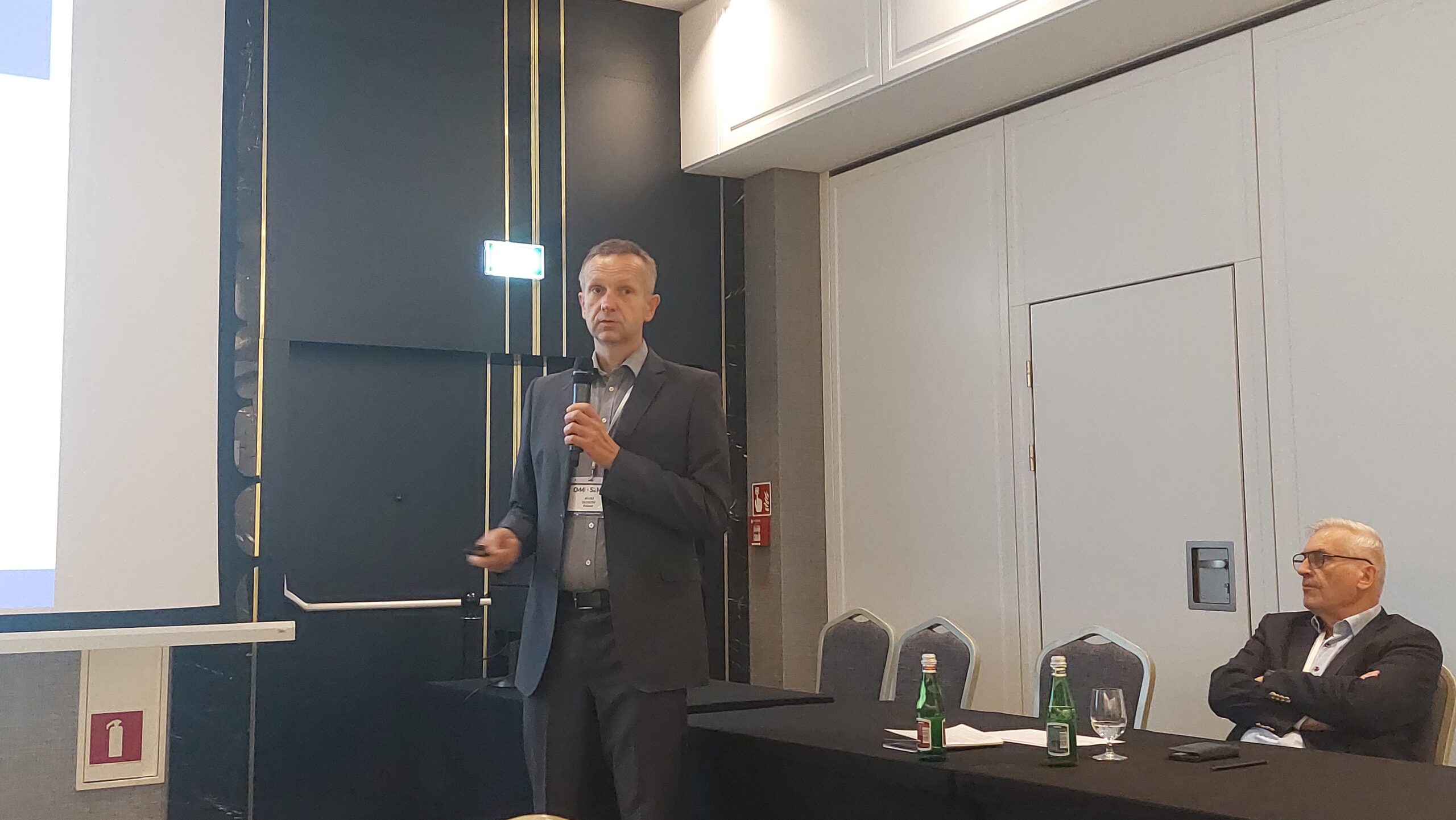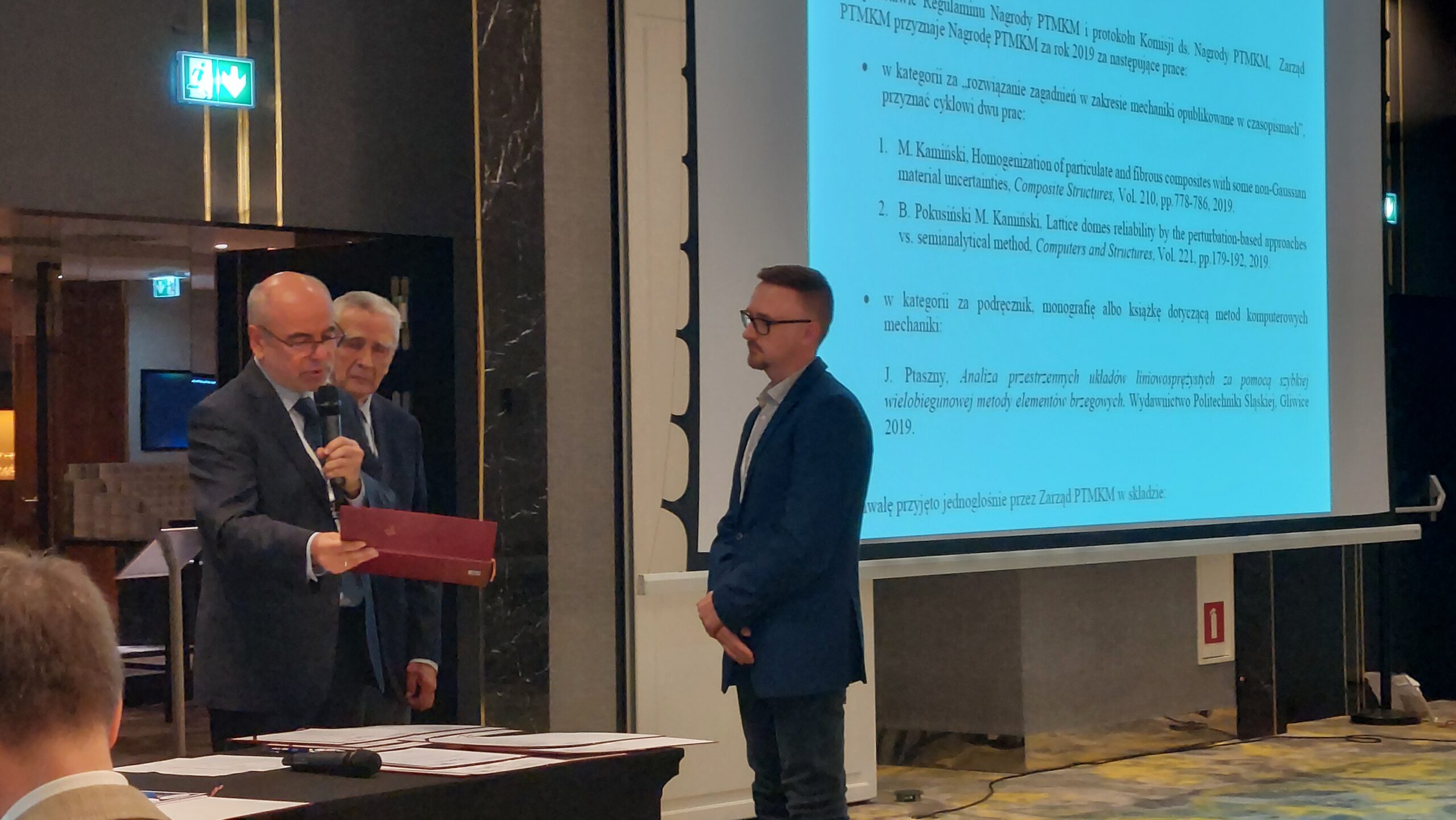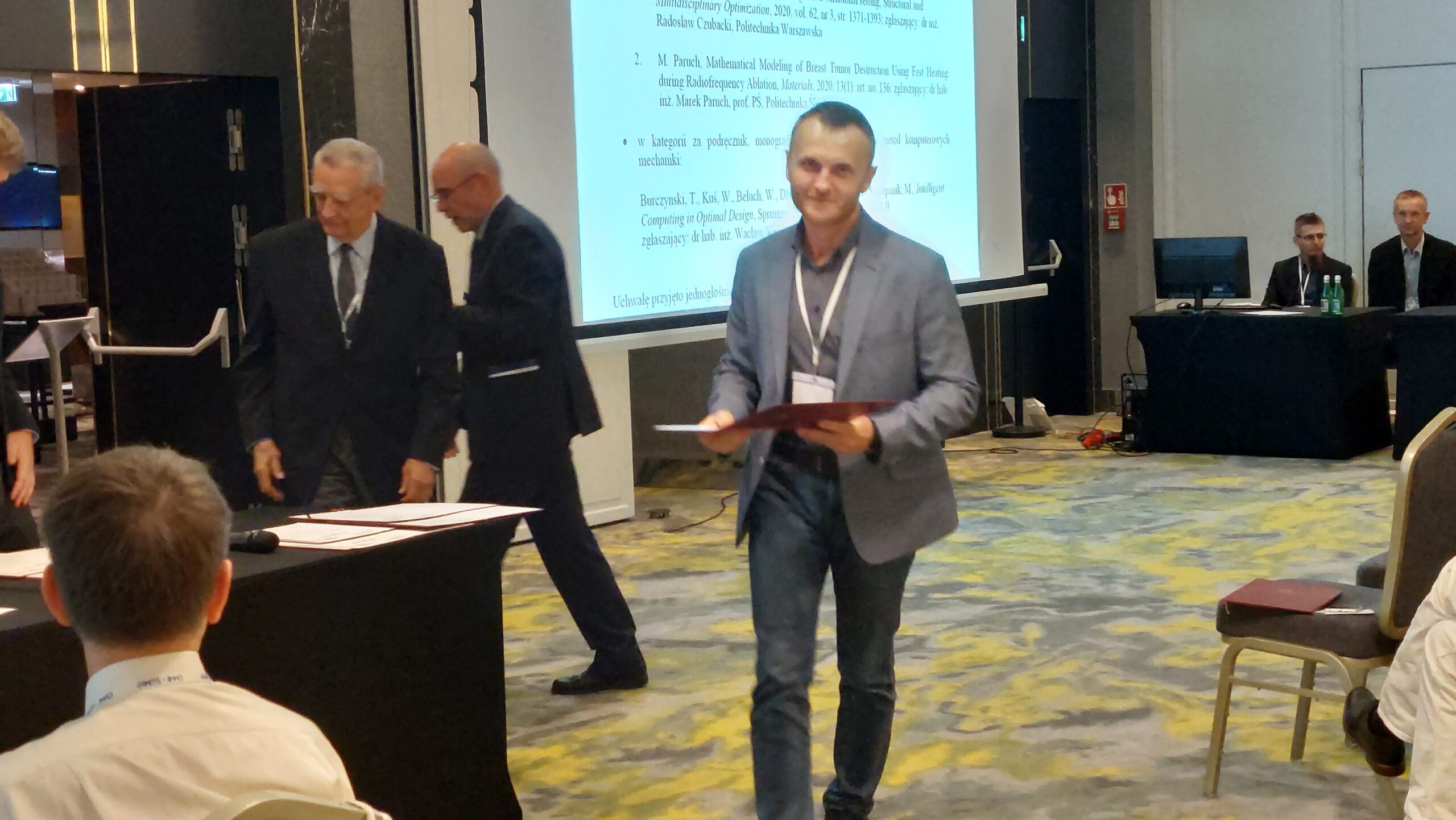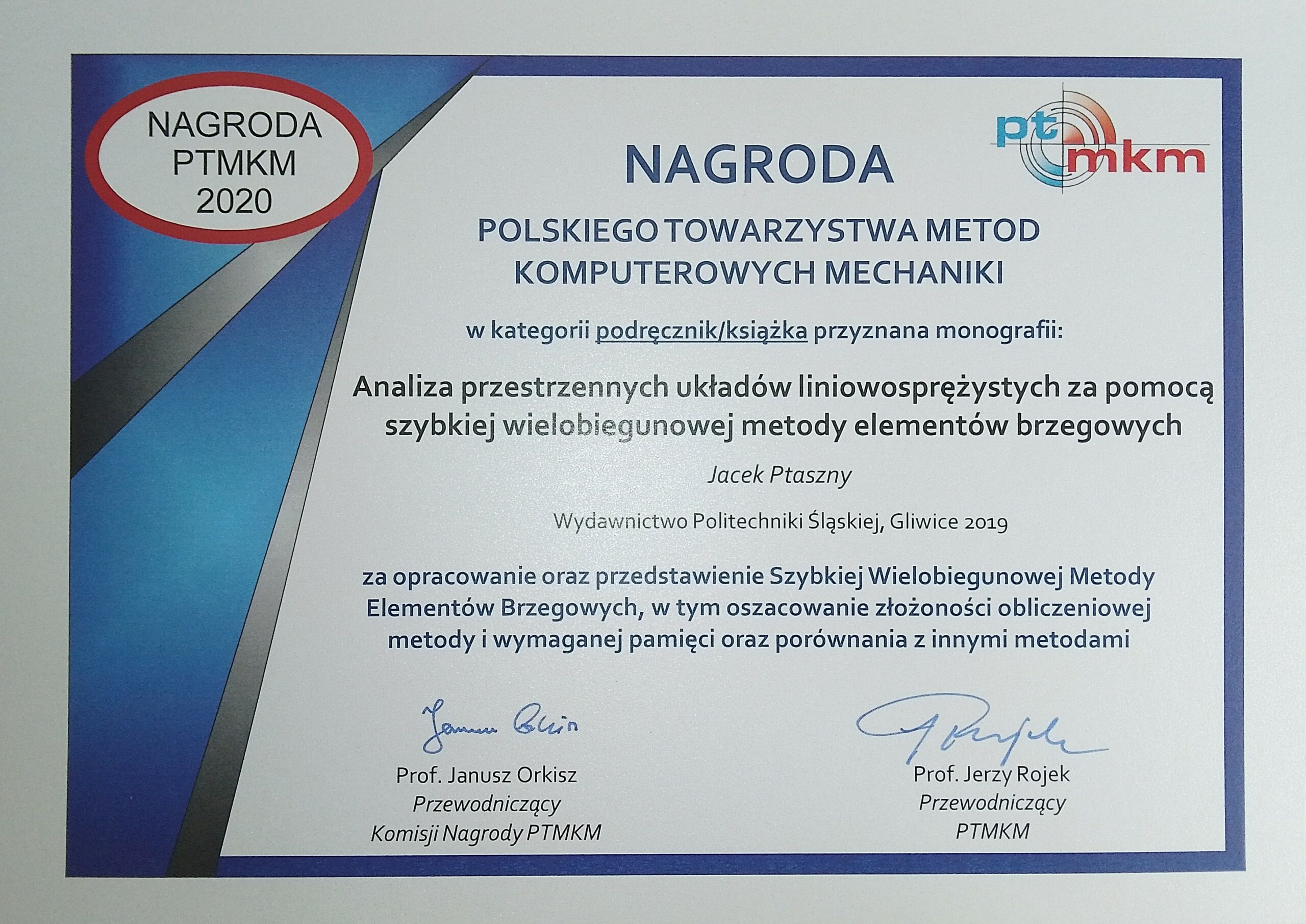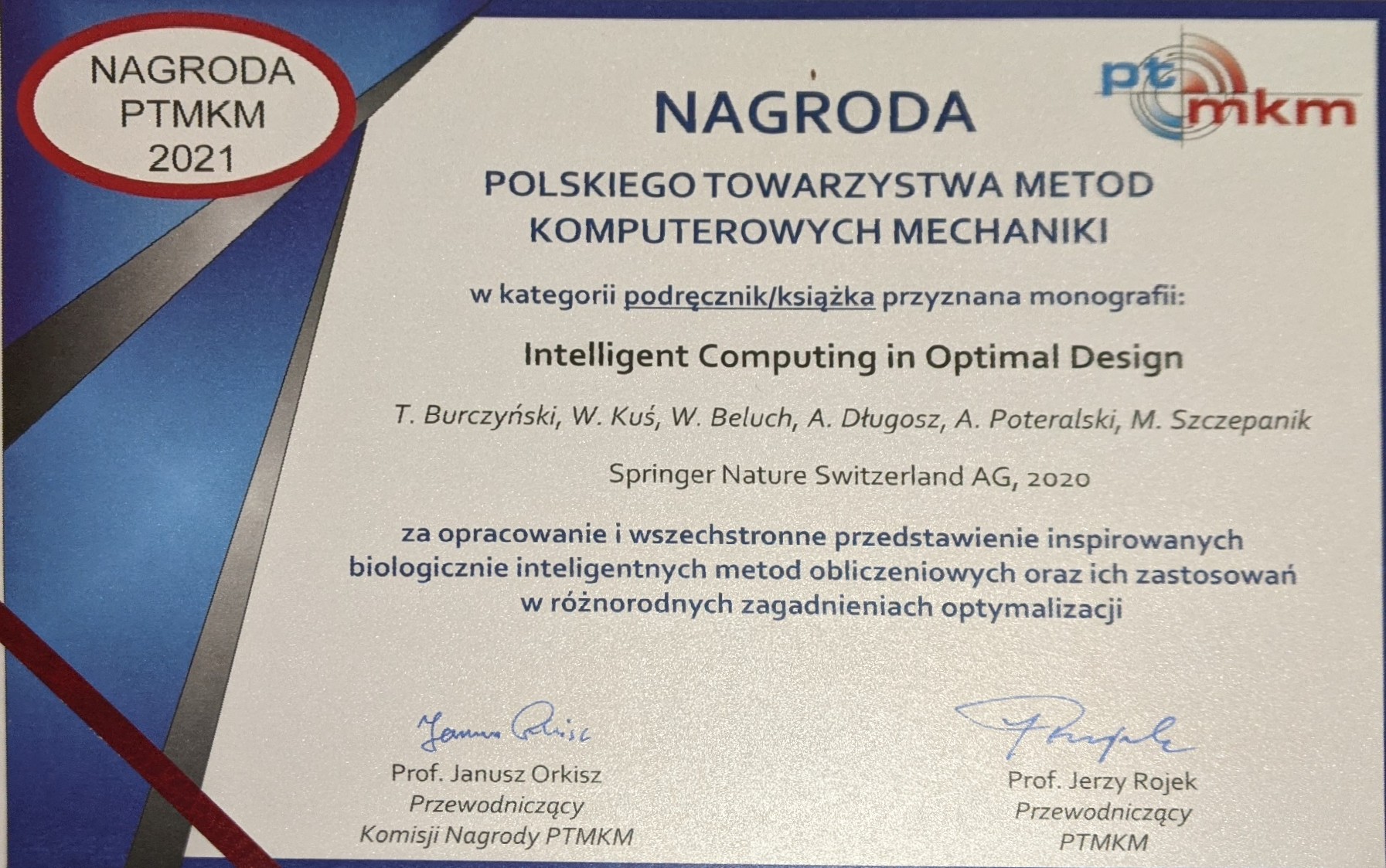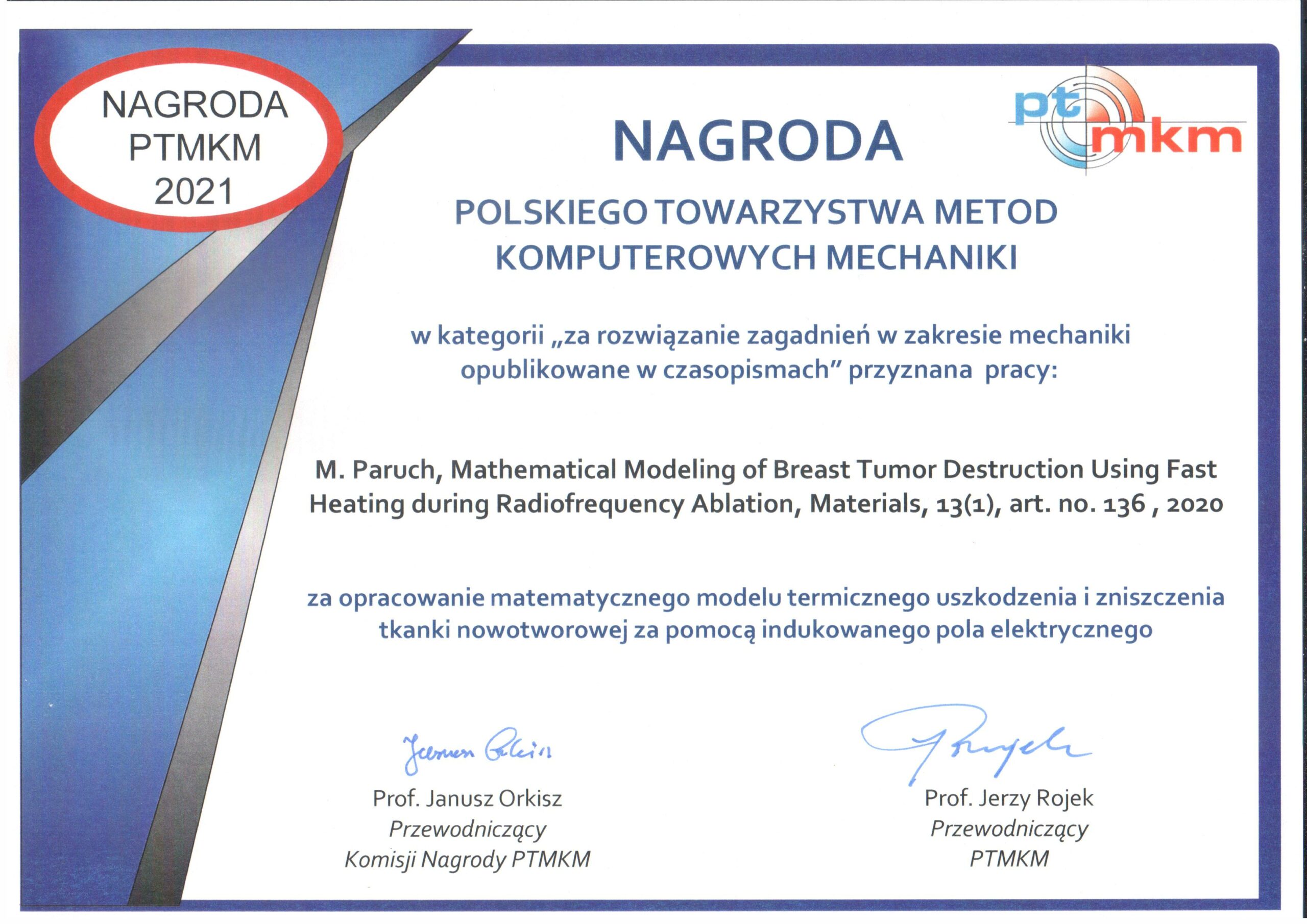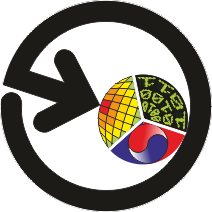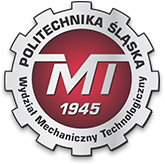The joint CMM-SolMech 2022 conference was held in Świnoujście (Poland) on September 5-8, 2022. The event encompassed the: 24th International Conference on Computer Methods in Mechanics (CMM) oraz 42nd Solid Mechanics Conference (SolMech).
Our Department was represented by a very large number of employees and doctoral students, who delivered papers and presented the results of their work in a poster session.
The following papers were presented:
- Impact of fibre orientation distribution reconstruction accuracy on composite’s behaviour prediction
– Witold Ogierman - Real-time Operational Load Monitoring of a composite aerostructure using FPGA-based computing system
– Waldemar Mucha - Parallel approach to the design of nanostructures
– Wacław Kuś - Parallel optimization of automotive shock absorber
– Przemysław Sebastjan, Wacław Kuś - Contact analysis of branched crack surfaces by the Boundary Element Method
– Piotr Fedeliński - Modelling of thin metal film heating using the DPL equation with temperature-dependent parameters
– Ewa Majchrzak, Bogdan Mochnacki - Automatic generation of internal points and cells in the fast multipole boundary element method
– Barbara Ciszyńska, Jacek Ptaszny - Bioresorbable stents: design, simulation and experiment case study
– Natalia Molęda, Grzegorz Kokot, Wacław Kuś - Differential evolution and elements of game theory for multi-objective optimization in mechanics
– Adam Długosz, Tomasz Schlieter - Identification of non-linear bolted joint stiffness using tightening characteristic
– Grzegorz Dziatkiewicz, Rafał Popiel - Shape optimization of the muffler shield with regard to strength properties
– Joachim Jarosz, Adam Długosz - Design of nanostructures based on molybdenum
– T. Burczyński, W. Kuś, M. Maździarz, A. Mrozek - Modelling of auxetic phase composite materials with optimized properties by fast multipole BEM
– Jacek Ptaszny - Analysis of crystallization degree during cryopreservation applying interval arithmetic
– Alicja Piasecka-Belkhayat, Anna Skorupa - Comparative analysis of slow freezing and vitrification methods using interval arithmetic
– Alicja Piasecka-Belkhayat, Anna Skorupa - Numerical modeling of laser induced high-temperature hyperthermia using the dualphase lag equation
– Mikołaj Stryczyński, Ewa Majchrzak - Modeling of photochemical and photothermal effects in soft tissue subjected to laser irradiation
– Marek Jasiński, Maria Zadoń - Modeling of the influence of elevated temperature on oxygen distribution in soft tissue
– Marek Jasiński, Maria Zadoń - Identification of thermophysical parameters using an artificial immune system
– Arkadiusz Poteralski, Jolanta. Dziatkiewicz
and the following posters were presented:
- Analysis of mechanical behavior of micro specimen using micro DIC method and numerical simulations
– Grzegorz Kokot, Tomasz Rusin - Granular computing in computational homogenisation problems
– Witold Beluch, Marcin Hatłas, Jacek Ptaszny - Electric field impact during modelling of thermoablation in multilayer breast model with tumor
– Marek Paruch - Application of the interval lattice Boltzmann method in two-dimensional advectiondiffusion problem
– Alicja Piasecka-Belkhayat, Anna Korczak - Influence analysis of environmental conditions on the surface layer of the rolling-sliding contact
– Antoni John, Henryk Bąkowski
In addition, the General Meeting of the members of the Polish Society for Computational Mechanics was held during the Conference. We are pleased to announce that this year PTMKM awards were also given to our employees:
in the textbook/book category awarded to the monograph: Jacek Ptaszny, „Analiza przestrzennych układów liniowosprężystych za pomocą szybkiej wielobiegunowej metody elementów brzegowych”, ror the development and presentation of the Fast Multipole Boundary Element Method, including an estimate of the computational complexity of the method and the memory required, and a comparison with other methods.
in the textbook/book category awarded to the monograph: T. Burczyński, W.Kuś, W. Beluch, A. Długosz, A. Poteralski, M.Szczepanik, „Intelligent Computing in Optimal Design”, for the development and comprehensive presentation of biologically inspired intelligent computational methods and their applications to a variety of optimization problems.
in the category “for the solution of issues in mechanics published in journals” awarded to the paper M. Paruch, „Mathematical Modelling of Breast Tumor Destruction Using Fast Heating during Radiofrequency Ablation”, Materials, 13(1), art. No.136, 2020,
for developing a mathematical model of thermal damage and destruction of tumor tissue by means of an induced electric field.
